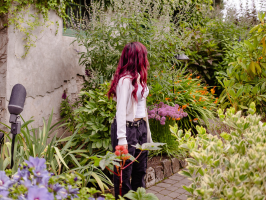Exploring tropes in storytelling


Wattpad users loooooove tropes. You’re all trope experts! Enemies to lovers, bad boys, only one bed–Wattpad writers and readers know tropes inside out and backwards, and everyone has their favorites. But let’s take a minute just to break down the idea of a trope in a bit more detail.
Tropes
A trope is just a commonly used convention or story element. It’s a pattern. A trope differs from a genre convention in that a trope is not necessary to the genre in the way a genre convention is. You can have a romance without “only one bed,”(a trope) but you can’t have a romance novel without a happy ending (genre convention). The happy ending is definitional to the genre. Similarly, you can have a fantasy novel without a chosen one (trope), but you can’t have a fantasy novel without some form of magic (genre convention).
Tropes can be pan-genre, or locked into one genre. Enemies to lovers, for example, can show up in any genre of story, but a chosen one requires some form of prophecy or magic that we only see in genres like fantasy and paranormal romance.
Tropes are often predictable, and that’s not a bad thing. The reader should, on some level, be able to predict plot events, because if they can’t predict the plot at all, you probably haven’t given them enough information. Part of the pleasure of reading comes from the interplay between expectation and arrival, setup and payoff, familiarity and novelty. Using tropes is a form of setup and payoff that shows a reader a familiar pattern and then uses that familiarity to illustrate something specific about the characters or the world.
Stereotypes
A stereotype is a kind of trope that concerns a marginalized group and has negative connotations. These are narratives about marginalized people made up and perpetuated by dominant groups that serve to strip the humanity and complexity from marginalized people, their histories, and their social locations. Even positive stereotypes (for example, “model minority” stereotypes about Asian people) are ultimately bad things because they deny marginalized people the full spectrum of human experience and gloss over specific histories and dynamics in favor of a reductive viewpoint. Be cautious when engaging stereotypes in your work, and make sure that your marginalized characters are fully fleshed out, with multiple personality traits and their own goals/motivations. For example, writing an Asian character whose only characteristic is being good at math is a stereotype and should be avoided. But writing an Asian character who is second gen Chinese American, good at math, has a cheerful rivalry with their twin brother, and wants to go to culinary school so they can eventually start their own family business as a baker is a character who is well-rounded and situated in a web of relationships and interests, with their own goals that inform their actions, and thus is not a stereotype.
Clichés
The distinction between tropes and clichés is a bit of a hot-button issue. Sometimes, one person’s favorite trope is another’s unbearable cliche. Like tropes, cliches are a recognizable storytelling convention; cliches are often called “overused tropes”, but the true distinction lies in the emotional impact of the story. Usually, something is called cliche when there is not enough specific, resonant emotional content in the story. If it feels like the characters in the trope could be swapped out for any other character, that’s when you’re getting into cliche territory. In contrast, a well-used trope uses familiar elements to illuminate something specific about the character and the story.
Crucially, a story is more than just a series of tropes strung together. Tropes are tools to create an effect in your story, they are not the whole story. In order to create emotional resonance and reader engagement with your story, you’ll need to create specificity and emotional depth through the characters’ goals, motivations, conflicts, and stakes. Character and theme provide the emotional depth to bring tropes to life, while plot provides the drama that gives context and situational meaning to tropes.
Writing well Commercially is about tantalizing your reader by mixing the familiar, in the form of genre conventions and desired tropes, with the new and specific in the form of well-rounded characters and compelling plots.
Going Deeper with Tropes
Here at Wattpad, we are loud and proud trope lovers. Tropes are the backbone of so many Wattpad stories, and readers come back to favored tropes again and again because there’s always something new to find there.
However, it’s important to think of tropes as tools for storytelling, not the story itself. When you’re working on a new story, it can be tempting to stuff in all the tropes you love. But a story is not just a succession of tropes. It needs internal logic and drive to push it forward, and dimensional characters to inhabit it. We’ll be spending more time on plotting in the future, but for now, here’s an exercise to think about how to more effectively integrate tropes into your stories.
Exercise
For a quick guide on building dimensional characters, see this worksheet. Once you’ve got some of that filled out, come back to this.
What is this trope? Describe the trope. What are its core elements? How do those core elements show up in your story? What might those core elements mean for your characters?
What appeals to you about this trope? Basically, why do you want to include this? What’s fun about it for you and for your readers? What does it add to the story that you couldn’t get any other way?
What are the consequences of this trope for the characters? How does this event change things for them? A character who is super conflict-avoidant is going to react very differently to being forced to work with their rival than someone who is fiery and argumentative, which in turn shapes the tenor and progression of the story.
The goal here is to get specific about how your chosen trope is showing up in your particular story. Remember, effective Commercial storytelling is about mixing the familiar (tropes and genre conventions) with the new (dimensional characters and plots).



















